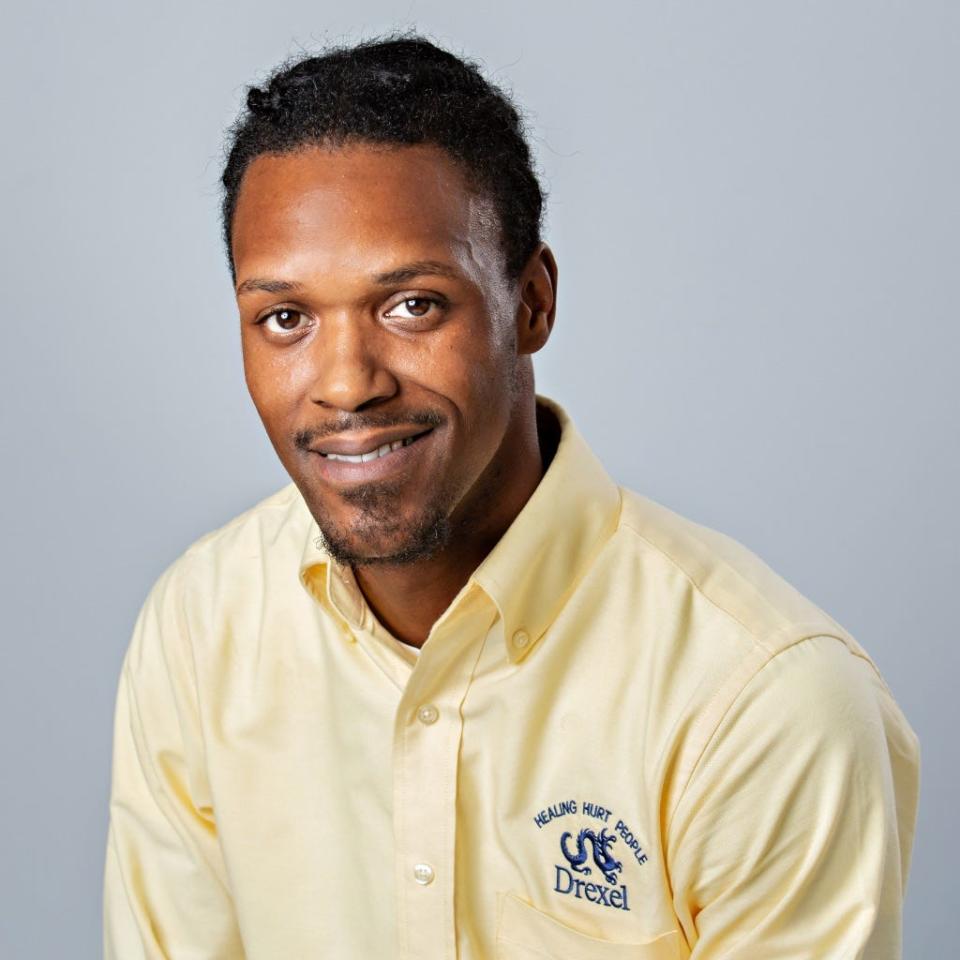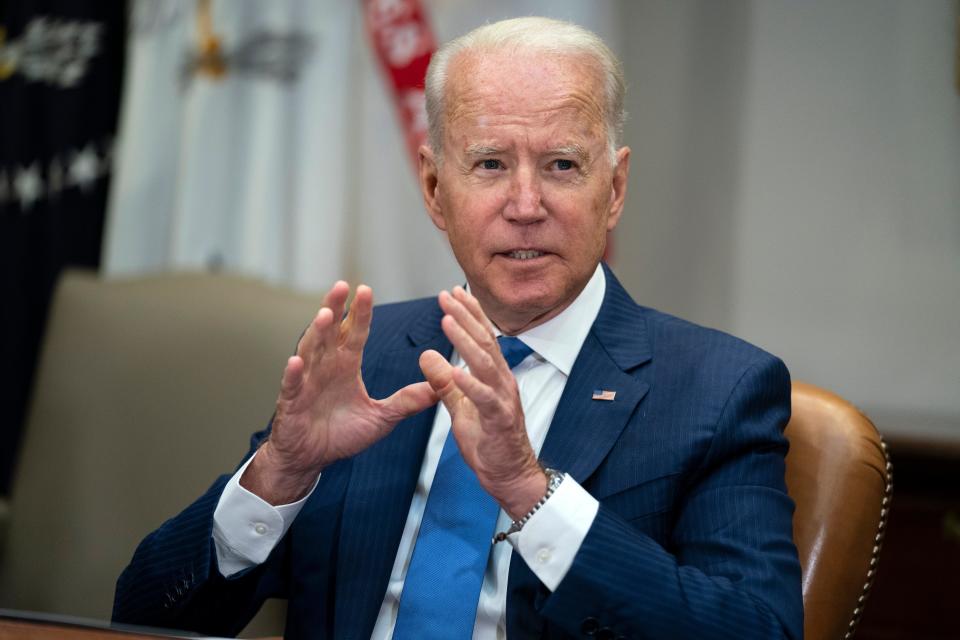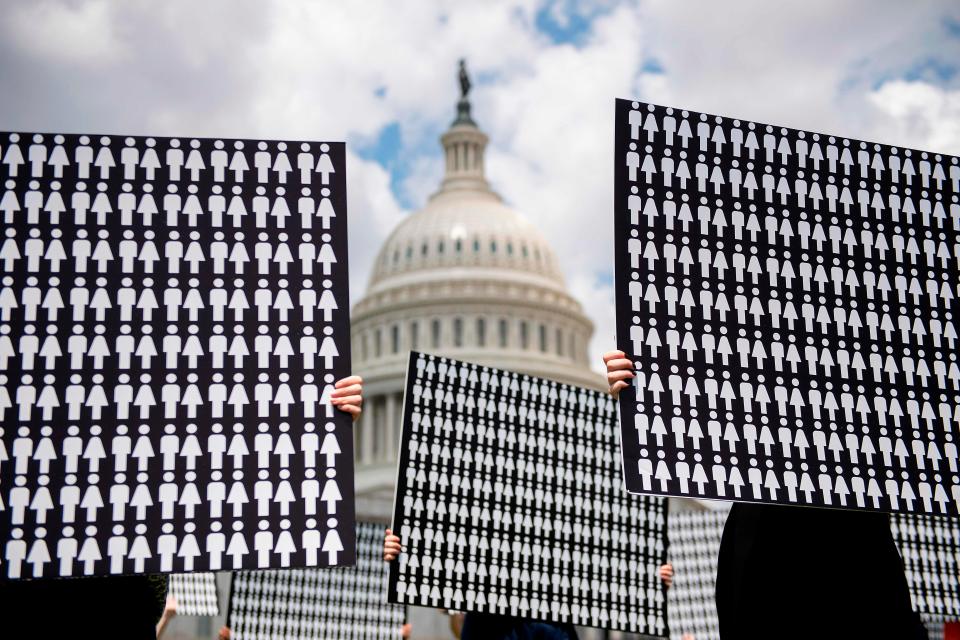As the gun control debate stalls, Medicaid becomes an unlikely tool to fight violence
WASHINGTON – Jermaine McCorey didn't give up selling drugs the first time he was shot.
It was November 2010 when an attempted robbery left him with bullets lodged in his left wrist, buttocks and thigh. The experience shook him.
But it wasn't until nine months later, when he was hit again – a near-fatal shooting that severed an artery in his leg and caused nerve-damage – that McCorey would decide to change his life.
"That was when I said, 'I'm going to reinvent myself and make something happen for myself,' " he said. "I always wanted to play a role in helping people and being a positive influence on my community. It was just that I made the wrong decision and hung out with the wrong crowd."
In the months between shootings, McCorey was meeting weekly with social workers through the Philadelphia-based Healing Hurt People, a hospital-based violence intervention program where the 30-year-old now works to reach out to young men like himself in his community and in local hospitals' emergency departments.

Healing Hurt People is one of dozens of community violence intervention programs across the country that aims to intervene at the hospital after someone has been shot, stabbed or assaulted. The programs offer assistance with social services, like housing, employment, trauma therapy and navigating the byzantine U.S. health care system, in order to break the cycle of violence.
As the politically divisive gun violence debate stalls on Capitol Hill, where a pair of bills focused on universal background checks and red-flag laws have languished, some states are moving to secure long-term funding for these programs by tapping an unlikely federal tool: Medicaid.
Over the summer, Connecticut and Illinois became the first states to pass legislation that dedicates state and federal Medicaid funds to cover the costs of hospital-based violence prevention services and beneficiaries who've been treated for a violence-related injury.
Advocates say other states are not far behind, paving the way for a national model as local officials look for ways to circumvent the longstanding gun debate in Washington.
The idea has been in the works for years, advocates say, but not until the Biden administration signaled that states could – and should – use Medicaid dollars to support these violence prevention programs have state lawmakers stepped up.
"What we're aiming for is sustainability because what we recognize is that these programs do in fact make a difference in health outcomes. They improve health outcomes," said Theodore Corbin, an emergency physician who founded Healing Hurt People.
"And it's not just that we don't want to see (patients) back in the emergency room, but to make them aware of how it's more important to heal them than to seek revenge, and we really do that by listening to them and validating them."
A shift to community violence intervention
The Biden administration has been under mounting pressure to address a rise in homicides and shootings across the country, a grim statistic that researchers say was fueled by a mix of post-COVID lockdowns, economic anxiety and a torrent of guns.
Through Sept. 2, more than 13,700 people had been shot dead in the United States in 2021, a 13% increase compared to the same time in 2020 and a nearly 37% increase compared to that same period in 2019, according to statistics compiled by the Gun Violence Archive.
While the president has blamed Congress for a lack of progress on gun control, his administration has thrown its weight behind community programs like Healing Hurt People, a cost-effective approach to tackling gun violence and successfully preventing violence recurrence.

The president had made violence intervention programs a pillar of his plan to tackle a rise in violent crime and established a White House Community Violence Intervention Collaborative comprised of mayors, members of law enforcement, advocates and experts. Biden also devoted $5 billion to community-led violence prevention in his proposed $3.5 trillion spending package, which focuses on priorities like childcare and education, and another $210 million in his fiscal year 2022 budget proposal to go toward that effort.
As part of Biden's crime strategy, the administration also advised state and local governments to use $350 billion in COVID relief funds to prioritize violence prevention, including investing in community programs, after-school programs for at-risk youth and hiring more police. The president also refined 26 programs across five agencies to include violence intervention and prevention programs as eligible applicants.
But to help states address concerns over long-term funding, the Centers for Medicare and Medicaid Services in April quietly advised state officials to use the public health insurance program to cover evidence-based violence prevention programs. The agency unveiled a webinar listing nine ways states could use federal dollars to support these programs, a move that greenlighted interest among several states, according to Kyle Fischer, an emergency medicine physician at University of Maryland School of Medicine and policy director at the Health Alliance for Violence Intervention.

"A lot of it was not knowing whether or not the federal government would reimburse their half of it," Fischer said. "This is a sustainable solution to help make sure states know how to pay for these programs in the long term."
The uncertainty over federal commitment led California to abandon a bill that would fund hospital-based violence intervention programs in 2019. Though the bill reached Gov. Gavin Newsom's desk, state legislators dropped the effort over concerns the Trump administration wouldn't match the funds.
Community-led intervention programs frequently rely on outside funding through philanthropic grants, foundations, corporations or even Victims of Violence Crime Act funds, which are administered by the Justice Department. Those funding streams are unstable and often fluctuate based on trends in gun violence, providing money for only a few years at a time, according to Andrew Woods, executive director of Hartford Communities That Care, a nonprofit that runs a hospital-based violence intervention program in Connecticut.

Connecticut's new law, which Woods helped champion, directs the state's Department of Social Services commissioner to amend the state's Medicaid plan to cover the cost of community violence prevention services by July 1, 2022.
Woods, who also runs Connecticut Hospital Violence Prevention Collaborative that played a key role in shaping the legislation, said the bill did not yield a single "no" vote despite the contentious debate around gun control.
"This is not a gun bill. We didn't even have to say that," he said, "This is about providing people with medical and behavioral health support who happened to be victims of violent crime."
Fischer, the emergency medicine physician, said the view that violence is a public health problem is often lost on people, but the latest effort by the administration to funnel federal dollars toward prevention programs underscores it as a health care issue.
"A lot of folks don't quite know what the connection is and what it actually means to treat violence like a public health problem," Fischer said. "It means investing in programs that work, mobilizing public health and traditional medical payers to do that as opposed to one-off grants here or there."
A nationwide model takes shape
Connecticut state Rep. Jillian Gilchrest, a Democrat who worked with advocates to pass the state's bill, said it made fiscal sense since majority of gun violence victims are uninsured or on Medicaid.
"From a strictly fiscal standpoint, we save if we use Medicaid dollars to prevent further gun violence and these hospital-based violence interventions have shown that you can prevent retaliatory shootings by having intervenors in the emergency room to handle family and friends," she said. "And then the follow-up care in the community that these intervenors provide gets victims of gun violence the further mental health and physical health care that they need."
Treating gun-related injuries in the U.S. is estimated to cost more than $1 billion annually, with programs like Medicaid and other public health programs shouldering most of the burden, according to a July report from the nonpartisan Government Accountability Office.
The report found gun violence is linked to about 30,000 hospital visits and 50,000 emergency room patients annually. Up to 16% of gun violence survivors are readmitted at least once within a year of their injury.
"Health care is good at taking care of the physical wounds but in terms of those deeper wounds of trauma and despair – it's not so good," Corbin said.
Gilchrest said what drove legislators to pass the bill was a recognition that they needed to start listening to communities of color most affected by gun violence and trauma on a daily basis. It was also an opportunity to recognize violence interrupters, she said.

"The Medicaid funding helps to legitimize this workforce and the work many of these individuals have been doing in the community for decades," she said. "They need a designated funding stream and in learning about what they do, I see this 100% as preventative health care and that's where I think the Medicaid dollars are essential."
Woods said the new funding stream also provides a career path for people like McCorey who want to devote their life to breaking the cycle of violence.
"If you get people who are willing to do this work, which is very difficult work, then you have to have a pathway to make sure that funds are there in a sustainable way," he said.
In the years following his second shooting, McCorey worked with Healing Hurt People to enroll in community college, pursue counselor training and eventually earn his certification as a peer specialist to work with individuals with substance abuse and mental health issues. He now works as a case manager with 18- to 35-year-old men using a trauma-focused approach.
"Peers decrease the stigma from the medical system. They build trust from patients from low-income communities with the hospitals because the patient can see someone who looks like them and speaks their language as opposed to a communication style that uses vague language they may not understand," McCorey said. "A peer meets the person where they are in the moment."
Contributing: Trevor Hughes
This article originally appeared on USA TODAY: Medicaid funds tapped to combat rise in crime as gun debate stalls

